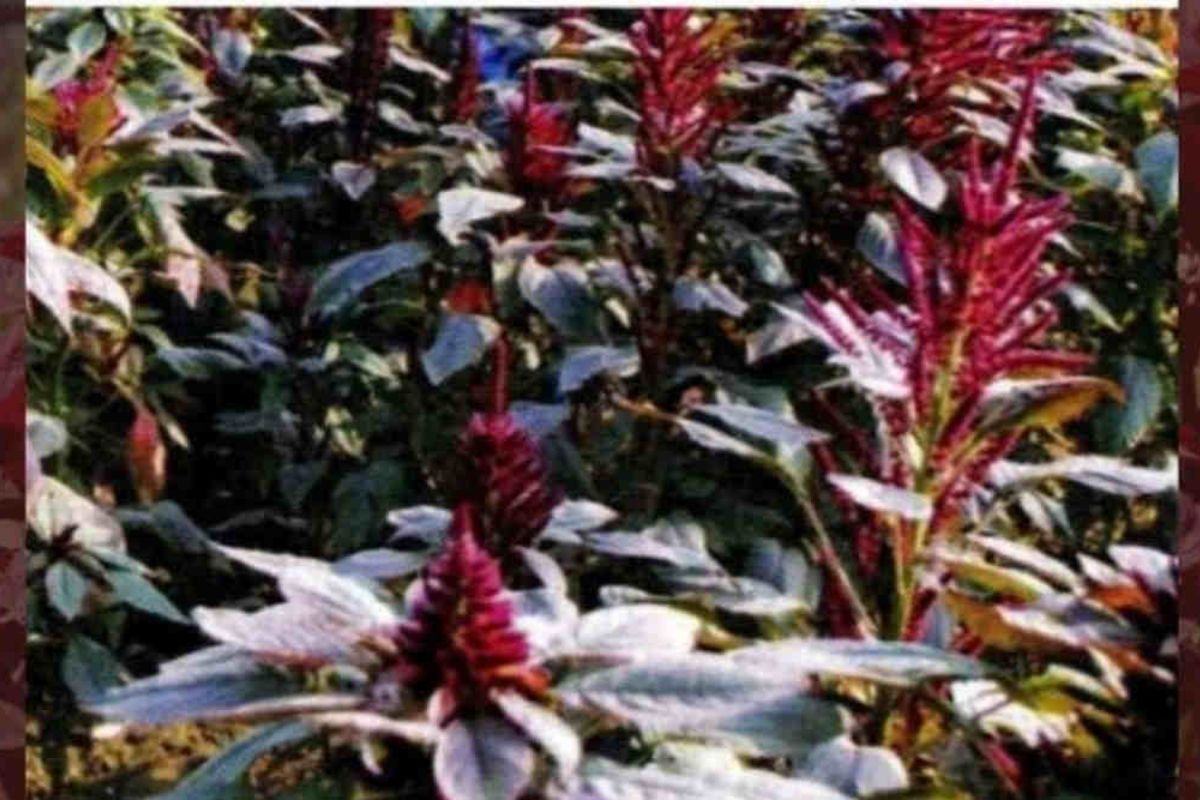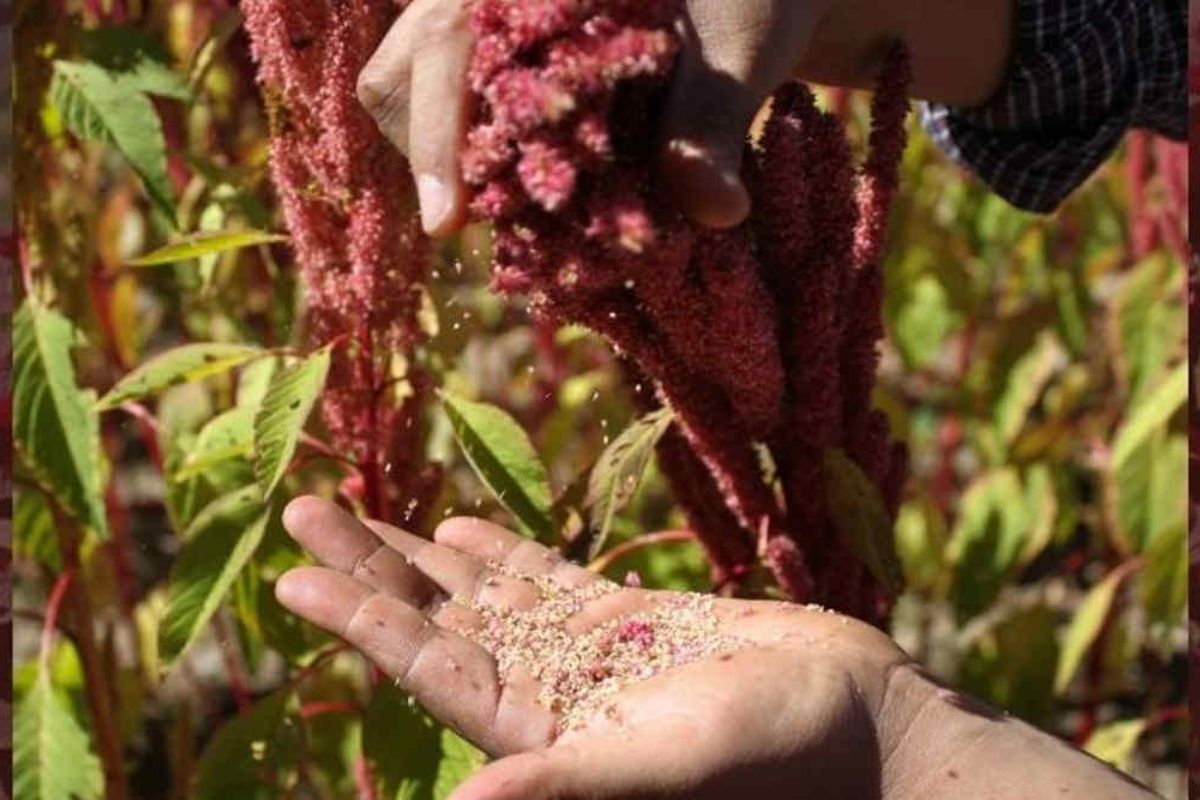Amaranth Cultivation: 10 advanced varieties give good yield, rich in many nutrients
Amaranth cultivation is beneficial for farmers with small holdings.
It is not possible to cultivate amaranth in very cold areas. It can be grown in the summer and rainy seasons. Summer crop gives relatively better yield because amaranth crop is not considered waterlogged. There is no need for much irrigation in amaranth cultivation. Planting summer amaranth is done at the end of February, then August-September is considered the best time for a rainy season crop.
Amaranth is also called a treasure of many mineral properties. Amaranth, rich in proteins, minerals, vitamins A, C, iron, calcium, and phosphorus, is very beneficial for health. Have you ever eaten red greens? Yes, this green itself is called Chaulai or Rajgira. You must have used Rajgira flour for fasting, this flour is made from amaranth seeds. There are many varieties of amaranth known by many other names. Cultivating some of its advanced varieties gives good yields, giving the farmers more profits. Come, let’s know about some varieties of amaranth, a treasure trove of qualities:
1. Annapurna – This variety of amaranth is considered good for hilly areas. The height of its plant is about 2 meters. The greens of this variety of amaranth are very good and it is ready for harvesting only after about 30 to 35 days of sowing the seeds. Its production per hectare is about 22.50 quintals.

2. PRA-1 – This variety also gives a high yield and is more suitable for hilly areas. The seeds of this variety contain 13-15 percent protein and 9.5 percent oil. Its average yield is 14.50 quintals per hectare.
3. PRA-2 – This variety is also specially prepared for hilly areas. The length of its plants is about 138 cm, and the crop is ready for harvesting in 133 days. Is. Its average yield is 14.50 quintals per hectare. The seeds of this variety contain 14-15 percent protein and 12 percent oil.

4. PRA-3 – Suitable for hilly areas, the height of this high-yielding plant is about 140 cm, and the crop is ready for harvesting in 135 days. Its average yield is 16.50 quintals per hectare. Another good thing is that diseases and insects do not affect this variety.
5. Durga – This high-yielding variety also gets ready early. The height of this variety of plants is about 170 cm, and the crop is ready for harvesting in just 125 days. Its average yield is 21.0 quintals per hectare. This variety is not affected by diseases and insects.
6. V.L. Chua 44 – This early variety of Amaranth gets ready after ripening in 110-120 days. This type of crop is good in hilly areas. Its production per hectare is 13.20 quintals.

7. Gujarat Amaranth 1 – This variety of amaranth is known for high yield in less time. The crop is ready for harvesting in 100-110 days. Its average yield is 19.50 quintals per hectare. Also, this variety is also not affected by diseases and insects and is good for plains.
8. Suvarna – This variety is cultivated more in North India. Its crop gets ready by ripening soon. It gets ready within 80-90 days after sowing the seeds. Its production capacity is 16 quintals per hectare. This variety is suitable for cultivation in Maharashtra, Karnataka, Odisha, Tamil Nadu and Gujarat.
9. Gujarat Amaranth 2 – This variety is early from Gujarat Amaranth 1 and is suitable for plains. Its specialty is that the crop gets ready quickly and the yield is also high. The crop is ready for harvesting in just 90 days and per hectare production is 23 quintals.

10. Kapilasa – This is also an advanced variety of amaranth in which the crop is prepared quickly. The crop is ready for harvesting in 95 days after sowing. Plants of this variety have a height of 165 cm and per hectare production capacity of 13.50 quintals. This variety is considered good for Orissa, Tamil Nadu, Karnataka etc.

Sandy loam soil is considered suitable for amaranth cultivation and its good yield is only in hot weather. Winter season is not good for amaranth cultivation.
Also Read: Amaranth Cultivation: Why is it beneficial for farmers with small holdings?
Contact us – If farmers want to share any valuable information or experiences related to farming, they can connect with us via phone or whatsapp at 9599273766 or you can write to us at “[email protected]”. Through Kisan of India, we will convey your message to the people, because we believe that if the farmers are advanced then the country is happy.
You can connect with Kisan of India on Facebook, Twitter, and Whatsapp and Subscribe to our YouTube channel.



